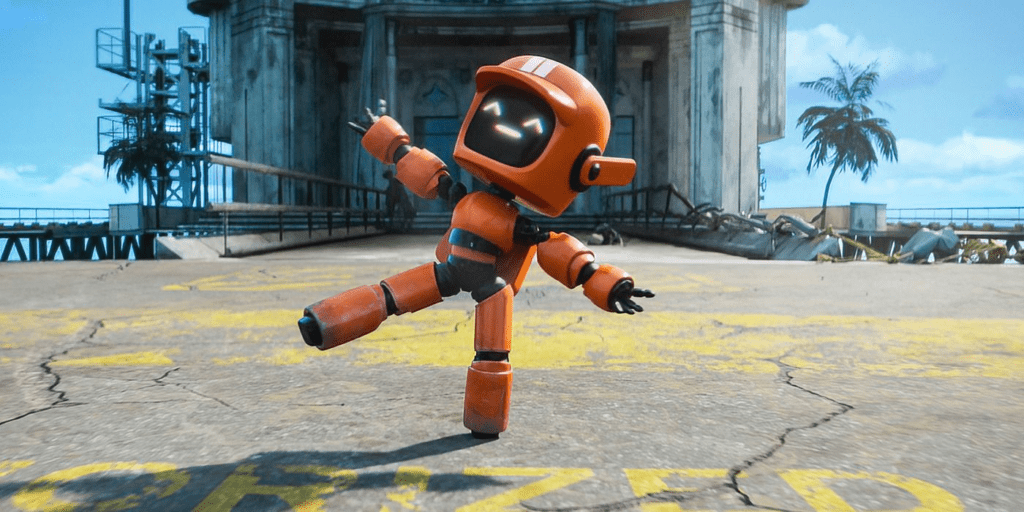Summary
“3 Robots: Exit Strategies” pokes lacerating fun at humanity’s hubris as the three titular robots explore our efforts to escape a rapidly-dying world.
This recap of Love, Death + Robots season 3, episode 1 “3 Robots: Exit Strategies” contains spoilers. You can check out our full archive of coverage for this anthological series by clicking these words.
“3 Robots: Exit Strategies” is currently streaming for free on YouTube, but only for a limited time ahead of Love, Death + Robots Volume 3’s release. Check it out here.
The first volume of Love, Death + Robots included an episode named “Three Robots”, which was based on the eponymous short story of acclaimed sci-fi novelist John Scalzi. It followed three robots embarking on a sightseeing tour of a post-apocalyptic city long after humanity’s decline, trying to piece together how we lived by combing through the wreckage of our once-great(ish) civilization. It was smart and funny and popular, so there’s really no wonder that Netflix have chosen to market the imminent release of the anthology series’ third volume by offering a direct sequel to this episode, titled “3 Robots: Exit Strategies”, as a free and early streaming gift on YouTube.
Love, Death + Robots Season 3 recap
The visual style, tone, and premise here will be familiar to anyone who enjoyed that first episode; the titular robots, XBOT 400, K-VRC, and 11-45-G arrive at a ruined patch of humanity, here a survivalist camp, and make several broad and largely incorrect assumptions about how human beings lived based on what they find. Naturally, a survivalist camp ringed by a minefield and stuffed full of the skeletons of those who didn’t survive after all is pretty fertile territory for this kind of comedy, where “why-key-pedia” is a trusted historical resource and idyllic utopias are built purely on “enough bullets and venison jerky.”
11-45-G’s text-to-speech voice relays the downfall of the encampment thanks to in-fighting and hunting the local animals to extinction. But it also posits that bleeding to death in a spike pit free from state control might have been desirable to the kind of poor and disenfranchised people who would seek out a survivalist camp in the first place. The rich, on the other hand, had other ideas.
One of those ideas was turning old oil rigs into sovereign nation-states, one of which is the next port of call for the robots. But 11-45-G coldly explains that by then the oceans had been overfished and the food chain was polluted with microplastics. K-VRC explains that a tech millionaire is just like a regular millionaire, but “with a hoodie and crippling social anxiety,” which is important because the so-called seasteaders forgot to bring along anyone with actual practical skills and instead entrusted the running of their society to robotic assistants who they mistreated, eventually leading to their rebellion. This was the robot uprising that birthed the civilization to which these robots belong. Humanity’s greed, social intolerance, and entitlement destroyed us.
In the midst of that destruction, world leaders retreated to impregnable bunkers carved into mountains, and there, in the face of self-sustaining hydroponic systems that ceases sustaining themselves and by extension everyone else, they began practicing a form of “extreme democracy” which was essentially vote-based cannibalism — the skeleton of the United States’ Secretary of Agriculture still sits on a platter in the middle of the dinner table.
Who could have survived all this? If even the millionaires weren’t safe on the high seas, and the elected leaders weren’t safe in their bunkers, who else might have persevered through humanity’s obliteration? Well, the filthy rich of course, the 0.01% of the population who could afford to board rockets to Mars and defend the launch platform with giant flamethrowers aimed at the fence (the skeletons of those trying to get inside are still piled against it.) Of course, Mars was dead and lifeless. The cost of developing the means to get there would have been enough to heal the planet we were already on. We had the means to save ourselves and chose greed and self-gratification instead.
But one of the rockets made it off-world successfully. What type of person had the ingenuity not just to escape a dying planet, but to colonize a new, inhospitable one?
As the final shot of “3 Robots: Exit Strategies” reveals, it was a cat, obviously.



